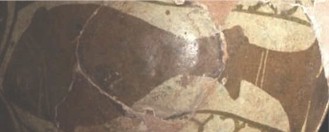 |
"Does material culture identify populations? In particular, does it distinguish urban from non-urban populations, different groups within cities, and/or the populations of different cities from each other? Do changes in the material culture of particular places signal changes in the identity of populations or the arrival of different people from somewhere else? Admittedly material culture is only one kind of indicator for identity among all the things that distinguish human groups from each other. How useful is it for the purposes of analysis to separate material culture from social culture (behavioural patterns and values)? Can this distinction be used to test to what degree differences in material culture have coincided with differences in social culture or not?"
The above is the opening paragraph of an article by Professor Michael Morony of UCLA on "Material culture and urban identity", and it poses a number of questions that are useful to bear in mind when studying and thinking about pottery. It is especially useful here because, according to Morony, Bulliet’s approach has been the only attempt to relate material culture to identity or social culture in an early Islamic urban setting. Since pottery finds are so abundant at sites, much more so than any other indicator of material culture, the kind of approach that Bulliet has used, to answer the kinds of questions that Morony has posed, would net great results in the study of pottery and interpretation of identity.
What can we actually conclude from these pieces? Because of the sparsity of information on Nishapuri pottery, and buff-ware in particular, it is dangerous to suggest that anything can actually be concluded from vessels that are only available to us through published catalogues. The vast majority of the site of Nishapur remains unexcavated, and because of the looting of the site any further archaeology would have no certain stratigraphy. Probably what we see in Wilkinson, and the few other catalogues from museums which have Nishapuri holdings, is a miniscule proportion of the total number of buff-ware vessels ever produced, and it is not a sufficient quantity on which to base any statistically valid study. Comparisons with other sites in Khurasan cannot be taken too far, either, as the political instability of this region continues from its early Islamic trends to the present day, making systematic investigations of sites very difficult. It is perhaps enough to say with our present limited knowledge that Nishapur produced a type of pottery which was not influenced by any traditions outside of Khurasan, and thus may have continued or revived more ancient local traditions, and this is what explains its oddity compared to what we are familiar with from pottery-producing Islamic sites further west.
Detail of Ashmolean pot [1978.2116]